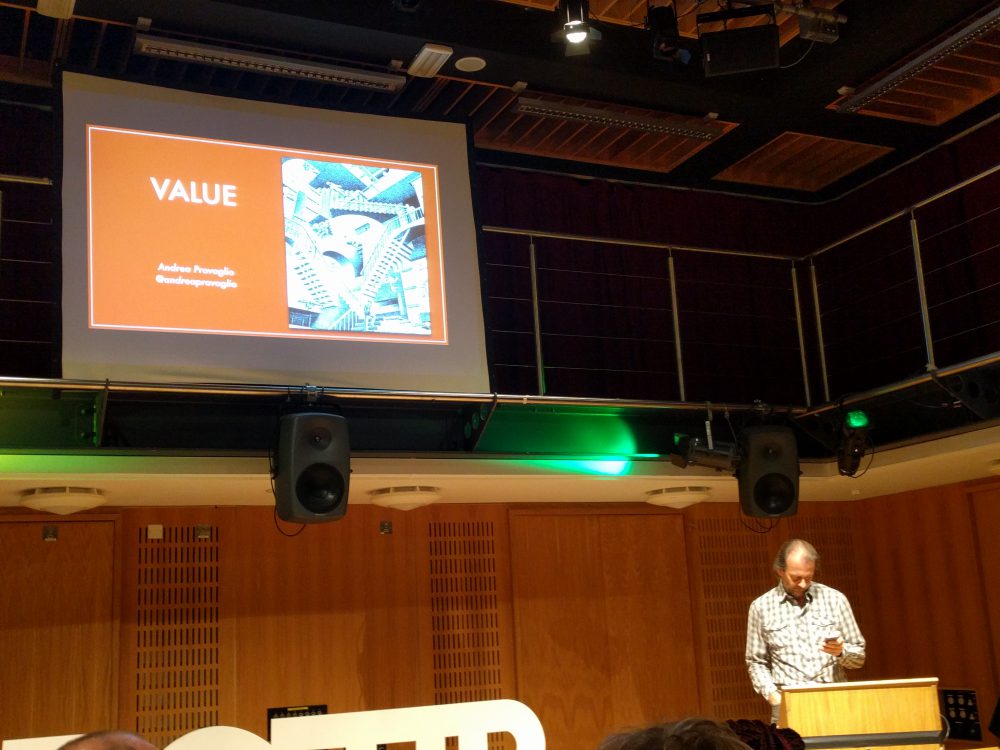
Value – Andrea Provagilo
- 2 minsAndrea Provagilo helps IT organizations to implement better ways of doing business. He coaches executives, managers and teams who want to improve technically and relationally. His main focus is on helping companies to transition to organizational and cultural models that are better suited to the kind of knowledge work that’s so typical of software development — which includes, but is not limited to, Agile and Lean. You can find Andrea on Twitter.
This is a live blog. Please excuse any spelling mistakes, grammatical errors and nonsensical sentences.

What is the definition of value?
Andrea interviewed lots of people to come to the conclusions in this talk. Value is mentioned in the Scrum guide and Agile manifesto without ever defining it.
Is it money? Is it what you want? The perceived benefit? Some perspectives are very definite and measurable whereas others are abstract and undefinable.
Value is based on your values.
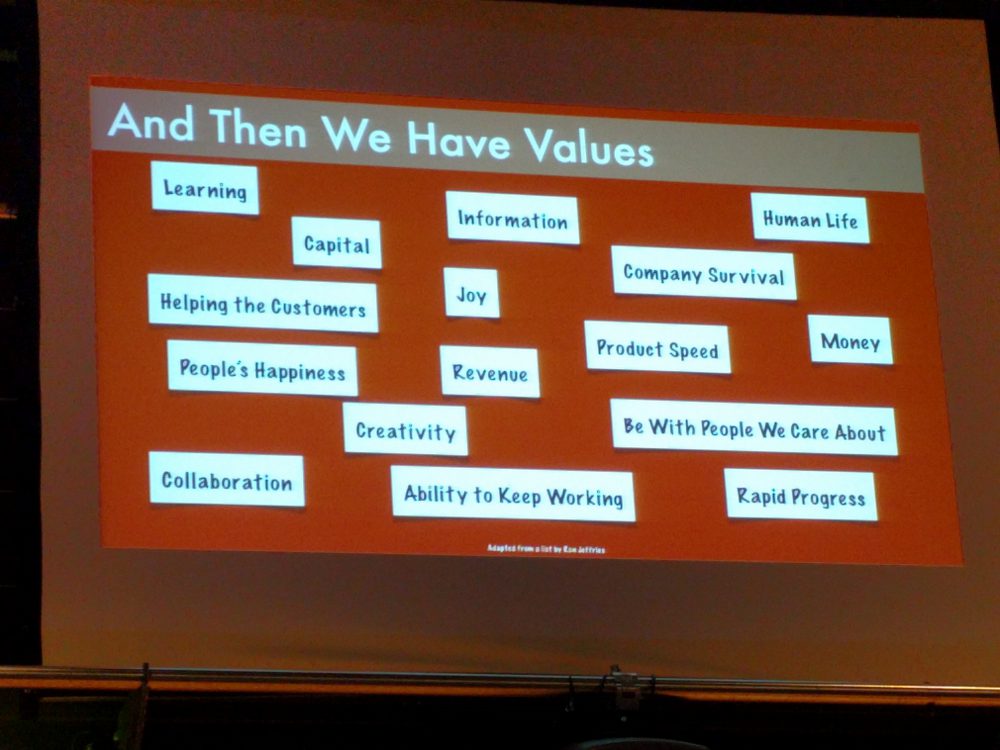
Deliver what…to whom…. and why.
Money and profit is a means to an end. Most companies need to define progress in three-month chunks, however there are very few long-term plans that can be implemented in three months. It’s important to remember that money is just a store for value.
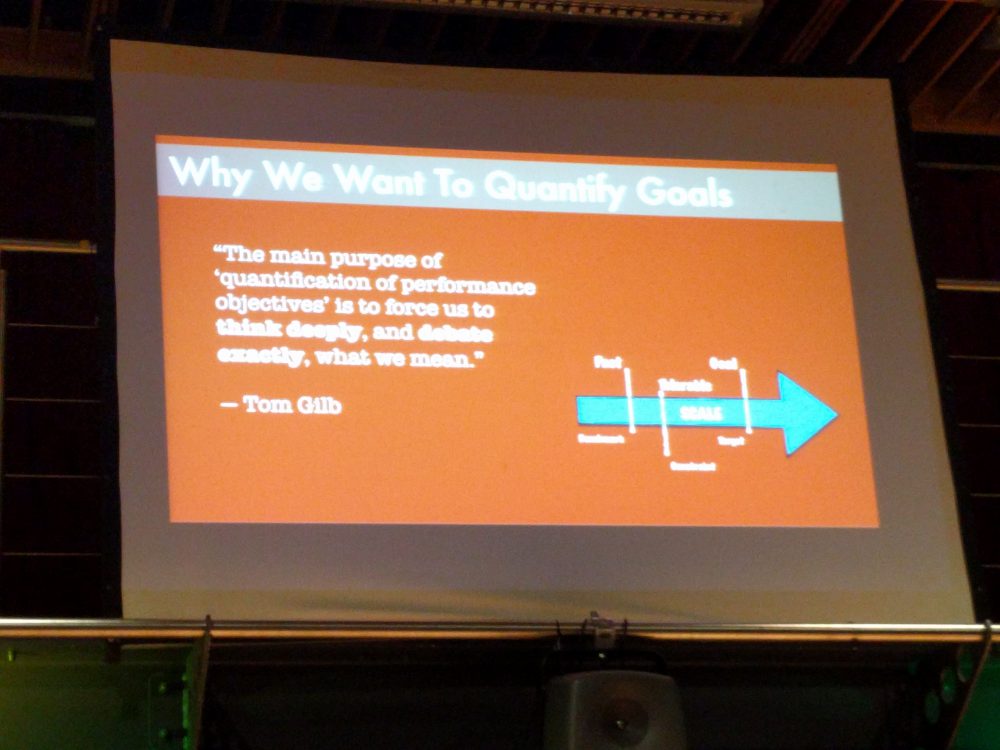
By quantifying goals we can come to a shared understanding of what we are working towards. Having the conversation in key.
Stakeholder are like actors. Some are on stage, some are behind the scenes. They all poke their head onto stage at some point. Could be stealth-holder! There are roughly 25 definitions of stakeholder. Andrea thinks it is anyone who can influence, or is influenced, by th outcome of an initiative.
Every stakeholder has different objectives.
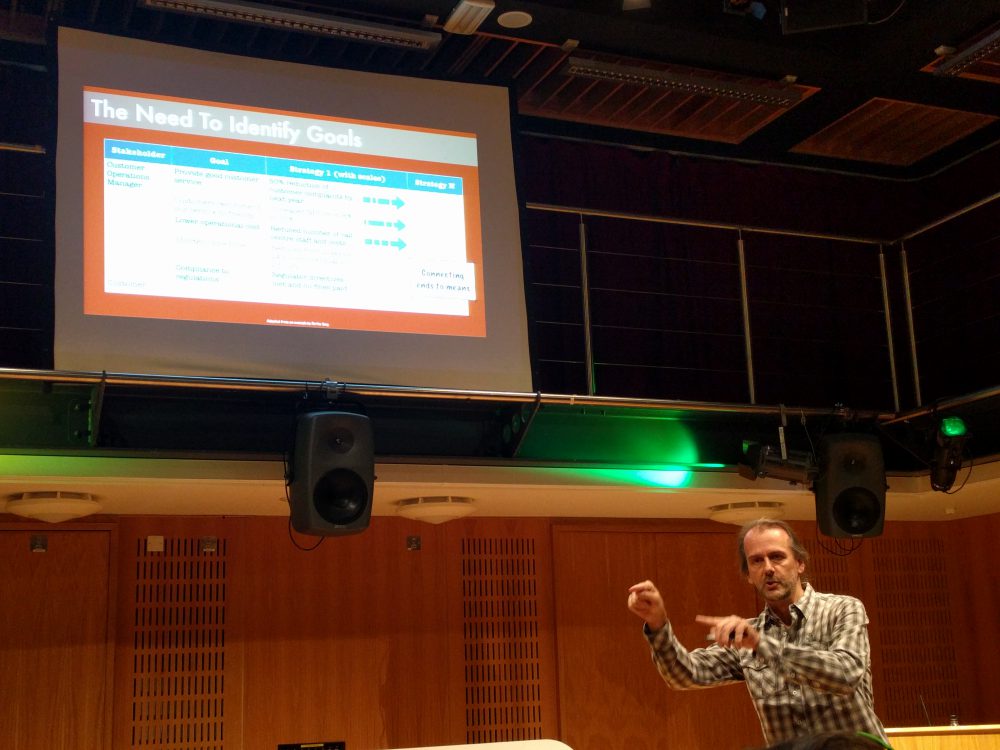
How can we talk about value when we can’t define the value of something.
Every stakeholder has a knock on effect to other stakeholders. Keeping low-level stakeholders happy prevents knock on effect to those higher in the hierarchy.
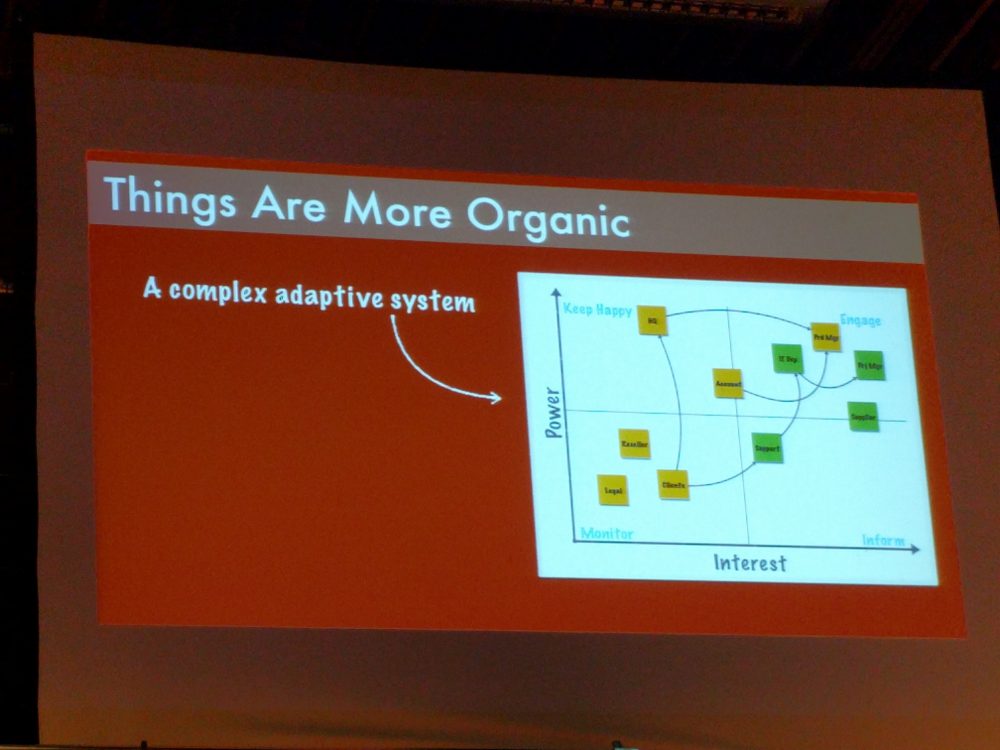
What are values?
Different personas in an organizations have vastly different values… beyond creating cashflow.
A core ideology comes from founders and owners.
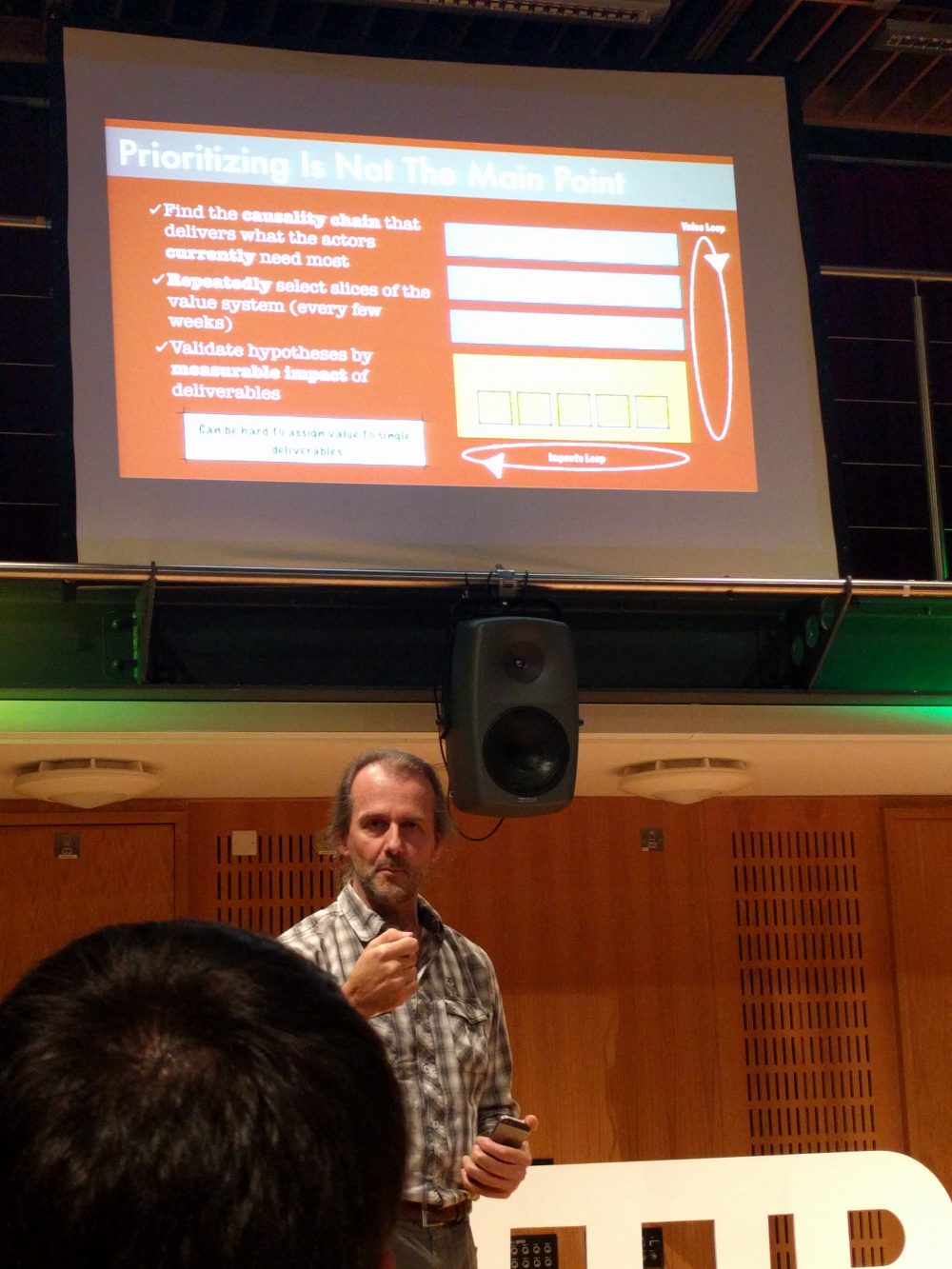
Value cannot be linked directly to a specific user story. Instead it is in results for the end-user that supports the values of the company.
If you optimize only one value, others will invariably suffer.
If you want to help your clients, you need to understand the value system with:
- Transparency
- Empathy
- Nonjudgmental attitude
Whenever possible, actors and stakeholders should be brought into a common space to discuss values.
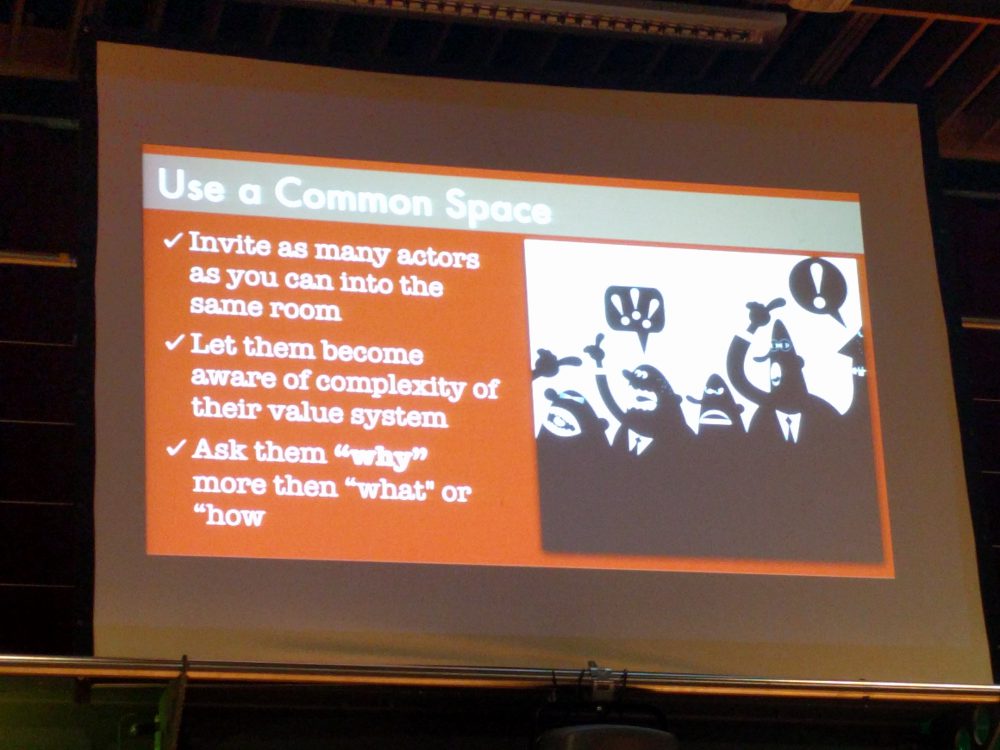
Don’t ask what – Goals and objectives
Ask why – Value and values
Andrea suggests that a visual language should be used to bring values into the visible world. This can help differing team members to understand more deeply what each others, and the organisations, values are.